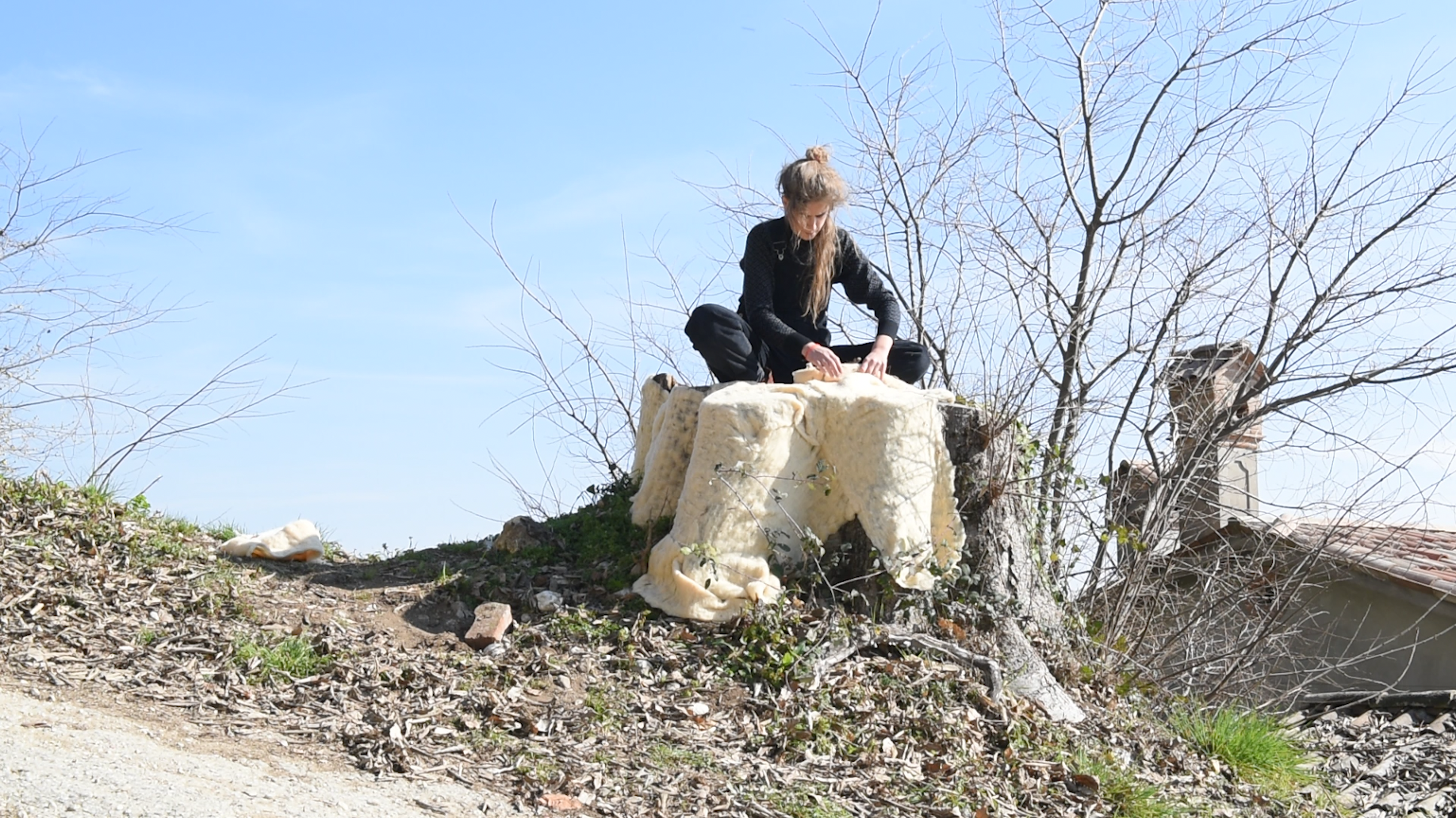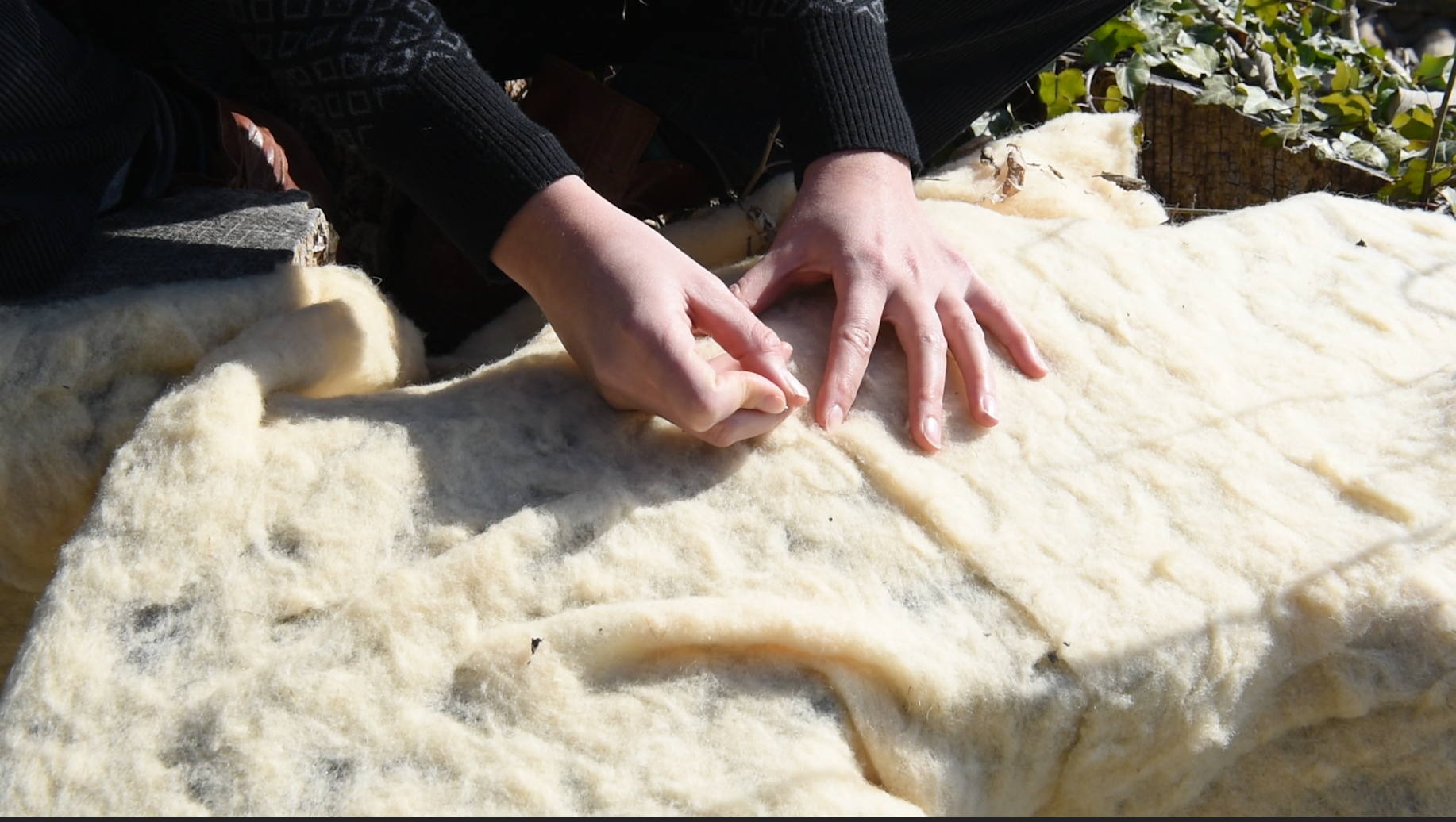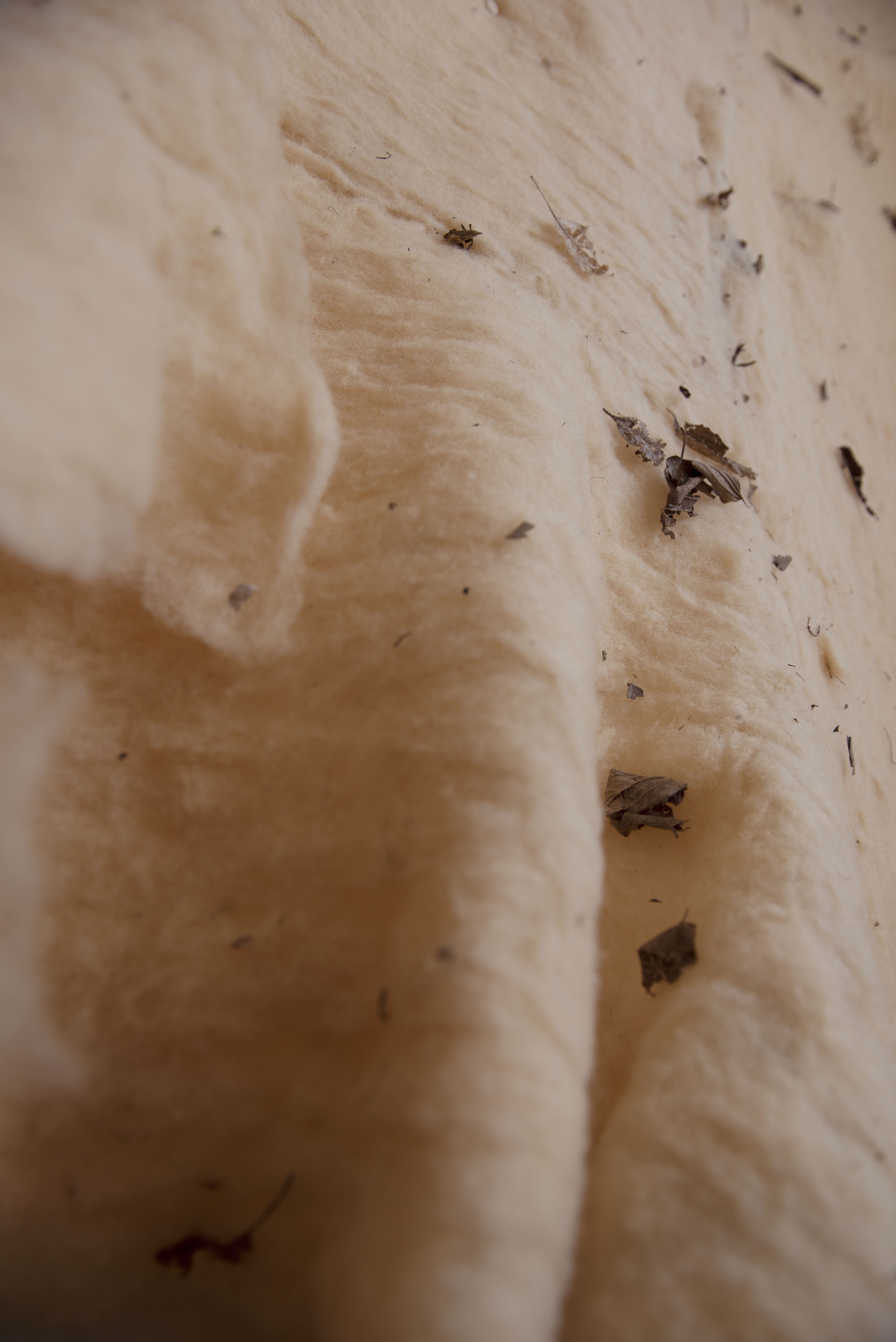Dressing The Forest
“Where does the tree end and the rest of the world begin? (...) Is the bark, for example, part of the tree? If I break off a piece in my hand and observe it closely, I will doubtless find that it is inhabited by a great many creatures that have burrowed beneath it and made their homes there. Are they part of the tree? (...) Considering, too, that the character of this particular tree lies just as much in the way it responds to the currents of wind, in the swaying of its branches and the rustling of its leaves, we might wonder whether the tree can be anything other than a tree-in-the-air. Is the wind, then, not as intrinsic to the tree as its wood?”
(Ingold, Being alive to a world without objects, 2013)
![]()
![]()
To watch the film
https://www.youtube.com/watch?v=kHmenBC1RqQ
Dressing the Forest is part of an ongoing research that aims to explore the potential for a different relationship between humans, other-than-humans, and the environment, which differs from the most common Western approach of reducing natural elements to their utilitarian value.
By combining performative and textile practices, this research explores the potential of artistic gestures to foster empathic connections with all living beings and prompt a reevaluation of our relationships with the world.
By felting, spinning and weaving techniques, I transformed wool fibers into surfaces, creating a garment for the forest. This project emerged from a feeling of sorrow and guilt as well as from an urgent need to propose a new dynamic of giving and receiving in our relationships with other beings emphasizing the interconnectedness that binds us all.
My artistic gesture was here addressed to a centuries-old hackberry tree that had been pruned in a region of northeastern Italy, serving as an example of the human attitude to exploit the land. The performance served not only as a tribute to the tree and a gesture of mourning for its loss but also as an act of acknowledgment and celebration of the intricate web of relationships that were severed by its felling.
Through an exploration of various aspects of our sensory perception, the act of dressing and its meaning, as well as the transformation of various materials, I aim to create a space for reflection, to foster a profound sense of respons-ability towards the world and to expand human responsiveness to the crises we face today.
This project was initiated last winter as part of theMA Arts & Ecology program at Dartington College of Arts, and I am currently developing new chapters for it.
![]()
“Where does the tree end and the rest of the world begin? (...) Is the bark, for example, part of the tree? If I break off a piece in my hand and observe it closely, I will doubtless find that it is inhabited by a great many creatures that have burrowed beneath it and made their homes there. Are they part of the tree? (...) Considering, too, that the character of this particular tree lies just as much in the way it responds to the currents of wind, in the swaying of its branches and the rustling of its leaves, we might wonder whether the tree can be anything other than a tree-in-the-air. Is the wind, then, not as intrinsic to the tree as its wood?”
(Ingold, Being alive to a world without objects, 2013)


To watch the film
https://www.youtube.com/watch?v=kHmenBC1RqQ
Dressing the Forest is part of an ongoing research that aims to explore the potential for a different relationship between humans, other-than-humans, and the environment, which differs from the most common Western approach of reducing natural elements to their utilitarian value.
By combining performative and textile practices, this research explores the potential of artistic gestures to foster empathic connections with all living beings and prompt a reevaluation of our relationships with the world.
By felting, spinning and weaving techniques, I transformed wool fibers into surfaces, creating a garment for the forest. This project emerged from a feeling of sorrow and guilt as well as from an urgent need to propose a new dynamic of giving and receiving in our relationships with other beings emphasizing the interconnectedness that binds us all.
My artistic gesture was here addressed to a centuries-old hackberry tree that had been pruned in a region of northeastern Italy, serving as an example of the human attitude to exploit the land. The performance served not only as a tribute to the tree and a gesture of mourning for its loss but also as an act of acknowledgment and celebration of the intricate web of relationships that were severed by its felling.
Through an exploration of various aspects of our sensory perception, the act of dressing and its meaning, as well as the transformation of various materials, I aim to create a space for reflection, to foster a profound sense of respons-ability towards the world and to expand human responsiveness to the crises we face today.
This project was initiated last winter as part of theMA Arts & Ecology program at Dartington College of Arts, and I am currently developing new chapters for it.




